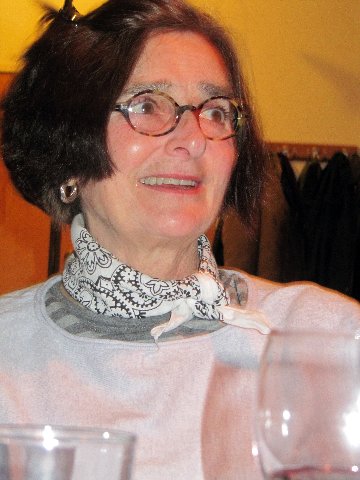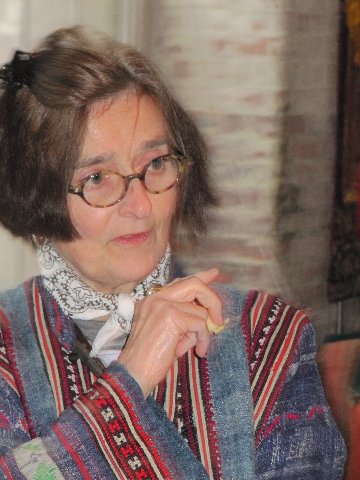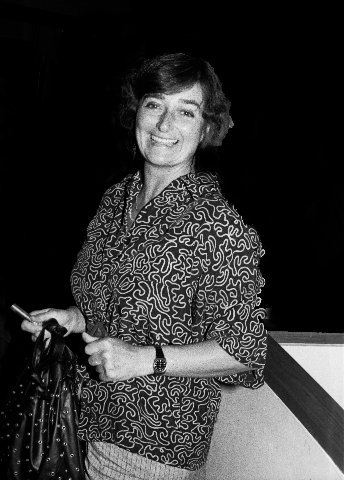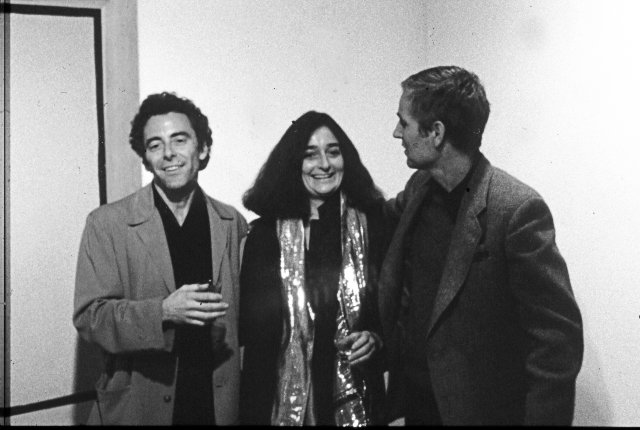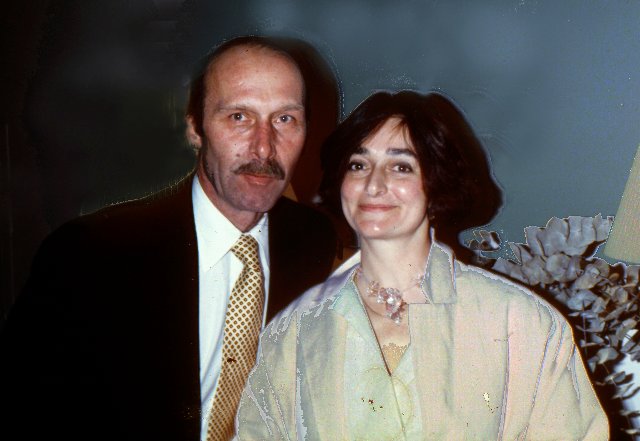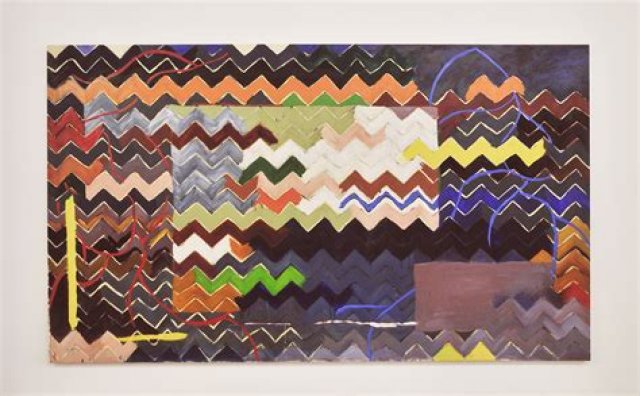Artist Katherine Porter at 82
Emerged with Boston’s Studio Coalition
By: Charles Giuliano - May 16, 2024
During the social unrest of the late 1960s, Katherine Porter was a force in an emerging generation of Boston artists. She had recently moved from the Berkshires to Santa Fe where she died at 82 on April 22.
Katherine Louanne Pavlis was born on Sept. 11, 1941, in Cedar Rapids, Iowa, to John Pavlis, who was vice president of his father’s office furniture factory, and Evelyn (Fawcett) Pavlis, who by 1944 was raising three small children. Her father was killed while serving in the Navy in World War II. Her mother later married Jack Greedy. She married twice, first to Stephen Porter, a sculptor and a nephew of the painter Fairfield Porter, and then to Mark Dietrich, a carpenter. They separated, and he died a few years later.
In my column Art Bag for Boston After Dark/ Phoenix, I covered exhibitions for Gallery 11 at Tufts University, where the younger artists exhibited. Most of Newbury Street was moribund including the archaic Copley Society and Guild of Boston Artists. That’s what the dailies Boston Globe and Herald Traveler covered.
There was a new spirit that flickered then ignited. The Institute of Contemporary Art had been evicted and lock, stock and barrel was moved as dead storage to a failed location, off the beaten track, on Soldier’s Field Road.
A new mayor, Kevin White, promised change. City Hall sponsored Summerthing which thrived for several years including its Concerts on the Common. Andrew Hyde, artist Adele Saronde and architect Edmund Child turned vacant lots into parks with murals on walls in the South End and Roxbury. Kathy hung out with them.
Under Deputy Mayor, Kathy Kane, Hyde was given a little seed money to reboot the ICA. With limited resources and the sweat equity of artists the ICA rose from the ashes and took flight.
There was a dinner party of artists who could then fit into one room. That head counting moment evolved as the Studio Coalition which organized the nation’s first Open Studios event. Making the rounds the artists were surprised and pleased at the enthusiastic turnout.
Reporting on this historic event I highlighted Porter as an interesting and particularly gifted artist. At that time she created systemic paintings in muted tones of grids of chevrons. Some areas of the works appeared to dissolve in a mysterious manner.
Building on that success the critic/ curator John Chandler and I approached Obelisk, then the most progressive gallery on Newbury Street. With Porter, Andrew Tavarelli, and Anthony Thompson, Chandler organized “Three If By Air.” It was a riff on the British are coming “One if by land, two if by sea.” It was restaged decades later at Boston College Art Gallery.
Indeed it started a revolution as for the first time the artists, then in their twenties, were shown on Newbury Street. That flipped the dynamic of the Boston art world which was rooted in post impressionist figuration. The exception was Boris Mirski who showed then aged Boston Expressionists who had fallen out of fashion.
There was another landmark when Porter was shown in the 1973 Whitney Annual and again in 1981. Tavarelli was also shown in a Whitney Annual as well as later Doug Andersen and the Starn Twins. This was a form of national recognition and generally entailed a career advancing move to New York. For Porter there would be a number of moves.
As the NYT obituary reports “In 1976 she moved to Belfast, Maine, where she converted a former hardware store into a studio and lived above it. She also spent nearly a decade in Montreal, with summers in Nova Scotia; visited the Galápagos Islands with her first husband and Buenos Aires with her second; made annual trips to Provence; returned to Maine; used a rented loft in New York as a home base for visiting-artist work nearby; and, just last year, relocated to Santa Fe (from the Berkshires) in hopes that the weather would help her arthritis.”
In Boston, through gallerists Phyllis Rosen and Joan Sonnabend of Obelisk Gallery, she found the support which launched her career. They helped her get a National Endowment for the Arts grant in 1972. They also connected her with the New York gallerist David McKee, who began showing her work in 1974.
Her liberal moral compass always pointed to true north. That was a flash point for social interactions. There were differences not just with individuals but entire communities. That was an impetus behind her peripatetic lifestyle always seeking compatible social and political surroundings.
That edge informed the work but never pushed her into being a political artist, at least not overtly. Her style was progressive and ever evolving. At its peak that entailed large, aggressive, expressionist works with elements such as barbed wire. They pointed to but failed to spell out her views and deeply rooted agita.
After a lapse of many years she resurfaced in the driveway of our former home in Adams. She was with the artist Richard Harrington and announced that she soon would be moving to the Berkshires.
There was an exchange of dinner parties and we met solo for dinner when Astrid was away. She was surprised when I put a tape recorder on the table. As always Kathy was utterly charming as well as volatile when pressed on her passionate views.
We learned that she suffered from Lupus and arthritis. That impacted what we saw in the studio. The works vividly expressed her signifiers with lively surfaces, complex designs and strong color. They were executed on an easel scale with oil stick. Her former materials were toxic and ailments limited her scale and energy. She was working on a series that was shown with success in Germany.
By e mail we kept in touch. She often commented on articles I sent to her. When she announced a pending move to Santa Fa I expressed concerns about the record heat wave and climate change. I wondered last summer if she would rather be in Maine.
She was embraced in her final home particularly by the leading LewAllen Galleries which mounted a retrospective. It would be appropriate for a gallery or museum to honor her seminal time and work in Boston.

